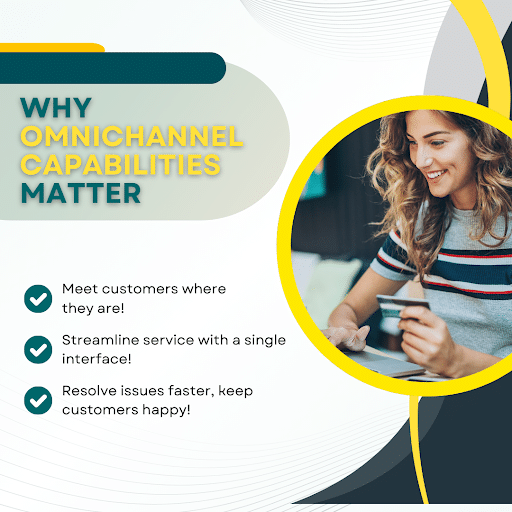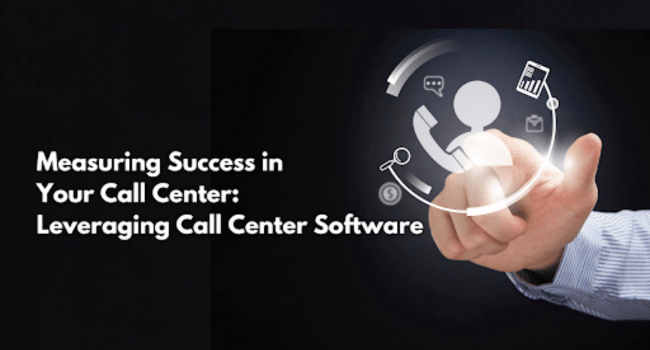Table of Contents
Success in a call center isn’t really about handling high call volumes; it’s about hitting that sweet spot where efficiency, customer satisfaction, and employee engagement all come together in perfect harmony. In a business environment as fiercely competitive as it is today, the difference is made by being able to define success in your call center and putting the proper call center software into action.
The Modern Call Center Landscape
The legacy call center has evolved into a multichannel contact hub. Considering the events of digital communication channels, including but not limited to e-mail, chat, social media, and others, call centers have turned into cloud contact centers where communication on these platforms is being sewn together.
This evolution brings many opportunities and several challenges. Increased ability to engage with customers through their preferred channels is one side; a greater need for sophisticated technology to manage and measure interactions effectively is another.
Defining Success in Your Call Center
Before jumping right into the technology, define clearly what success will look like for your call center. Success metrics differ widely based on your industry, customers, and business goals. However, some universal metrics are key to track:
- First Call Resolution (FCR): This is the number of calls resolved at the very first interaction and does not require a follow-up. High First Call Resolution therefore becomes an effective metric for efficiency and customer satisfaction.
- Average Handle Time (AHT): This is the average time that an agent spends on a call. This includes handling time and after-call work. The important thing in operational efficiency management is the management of AHT against quality service.
- Customer Satisfaction (CSAT): This is directly from customers’ feedback, usually obtained through post-call surveys, on their experience with the company or representative.
- Net Promoter Score (NPS): The metric used to measure the loyalty of customers by asking them about the likeliness of recommending their services to others. A high NPS rate portrays very good customer satisfaction and high loyalty.
- Employee Engagement: If the employees are happy and engaged, then they are more likely to provide excellent customer service. Measuring engagement can reduce turnover and result in quality in services.
- Call Abandonment Rate: This is the percentage of callers who abandon the call before reaching an agent. Low abandonment rates show that call handling is efficient and customers are satisfied.
- Service Level: The service level is the percentage of calls handled within a specified period. Service levels are important in assuring customers that their inquiries will be responded to within a reasonable time frame.
The Role of Call Center Software in Measuring Success
Call center software can play a huge role in measuring and improving the metrics that define success. These advanced software solutions provide all tools for monitoring, analyzing, and optimizing call center performance in real-time.
Real-Time Analytics and Reporting
Key benefits of today’s call center software are real-time analytics and reporting. Now, managers can effectively track all Key Performance Indicators—FCR, AHT, CSAT scores—in real-time and take immediate action where necessary.
For example, if AHT suddenly spikes unexpectedly, managers can quickly identify whether this spike is caused by a specific call type, by an individual agent, or possibly even by some technical fault—and act accordingly.
Real-time insights also let agents adjust their approach mid-call to better resolve customer issues and more effectively empower a superior customer experience.
Omnichannel Capabilities
Customers expect a multi-channel flow of service today, so call center software with omnichannel capabilities will give agents the ability to handle customer interactions through voice, chat, e-mail, and social media in a single interface.
This not only integrates the customer experience as a whole but also empowers a single view of the interaction history for each client for tailored service and enables them to resolve issues faster on their own. This has a direct impact on first-call resolution and satisfaction scores.

Workforce Management Tools
Workforce management is a large part of keeping service levels high while keeping the associated costs under control. Workforce management tools for projecting call volume, staff scheduling, and shift changes are available in many call center software packages.
These tools ensure that the right number of agents are available at the right times to avoid very high abandonment rates and hit service levels consistently.
Customer Relationship Management (CRM) Integration
An integrated CRM system within call center software provides the agents with information about the customer instantaneously. The personalization of interactions reduces AHT, decreasing the time an agent spends looking up the details of a customer, which directly improves FCR.
It has also provided a way to track customer contacts irrespective of the channel through which it is made, creating a view of the 360-degree history and preferences of customers, very instrumental in improving service quality and customer satisfaction.
Quality Monitoring and Coaching Tools
Any successful call center incorporates quality assurance into the overall package. Software used in call centers contains tools for recording and monitoring calls that can be applied to quality assurance and training.
This allows managers to listen to those calls to ensure company policies are adhered to and, more importantly, highlight areas where agents may need refresher training or coaching. Feedback through regular monitoring improves the performance of the agent, which impacts FCR, CSAT, and NPS positively.
Leveraging Cloud Contact Centers
Businesses are rapidly adopting the cloud. In this context, cloud contact centers have proved to be the game changer in the industry. These solutions have several advantages that relate directly to the success metrics mentioned above.
Scalability and Flexibility
Cloud contact centers can scale their operations either way up or down depending on the demands. It could be seasonal spikes in call volume or expanding to help new channels of communication. Cloud solutions adapt very fast, without large infrastructure investments.
This makes sure that the service levels are maintained even when things are at peak activities, thus reducing the likelihood of call abandonment and raising general customer satisfaction.
Cost Efficiency
Though very important, this was placed at the bottom since once all of the other reasons have been considered, there needs to be some financial justification for moving away from traditional call center technology.
Traditional on-premise call centers mean huge capital outlay in hardware, software, and maintenance. On the other hand, cloud contact centers are subscription-based, thus eliminating large upfront costs and making their businesses pay only for the usage.
This cost efficiency enables every business, regardless of its size, to make use of advanced call center technology. This further ensures that small to medium enterprises can use the tools they need to measure and improve call center success.
Enhanced Data Security
For any organization, data security can never be underestimated, particularly for those organizations that are dealing with sensitive information about their customers. Advanced security features are hardwired into the cloud contact centers, including encryption, updates, and compliances adhering to industrial regulations.
This builds trust in the customers that the business takes relevant care of handling their data safely, which again results in a high CSAT and NPS rating.
Disaster Recovery and Business Continuity
Cloud contact centers offer a resilient disaster recovery and business continuity solution. The operations could be continued with a seamless run of services in case of any natural calamity or other unexpected incidents, thus maintaining the service levels and not impacting customer satisfaction.
Conclusion
Accurately measuring success in your call center requires top-to-bottom knowledge of the metrics that drive performance and customer satisfaction. Advanced call center software allows cloud contact centers to grant businesses real-time access to insights that will improve operational efficiency and overall customer experiences.
Embracing both new technologies and adapting to evolving customer expectations is necessary for further and increased success in call centers. Whether through AI-driven analytics, omnichannel capabilities, or robust workforce management tools, the right call center software can be the cornerstone of your success in today’s competitive environment.
FAQs
How does call center software enhance customer satisfaction?
The most important feature of the call center software involves making real-time data and customer interaction history available to agents, giving them faster and more personalized services.
Why use a cloud contact center?
In contrast to this, the cloud contact center offers much better scalability, cost efficiency, and improved security of data to be more adaptable to the dynamic requirements of businesses. They provide suitable disaster recovery and business continuity solutions for smooth service delivery, even when there could be an issue with operations.
How does AI contribute to call center success?
AI can go through reams of data and come up with actionable insights that will help businesses improve the key metrics about the contact center, such as First Call Resolution and Average Handle Time. Moreover, AI-powered chatbots are quite effective at handling routine inquiries, freeing human agents to deal with more complex problems.
Read More on KulFiy
The Ultimate Guide to Disaster Recovery for Call Center Services
The best Contact Center Software to help you drive Results: ICTContact
Real-Time Coaching Vs. Post-Call Coaching: When To Use Each Approach
